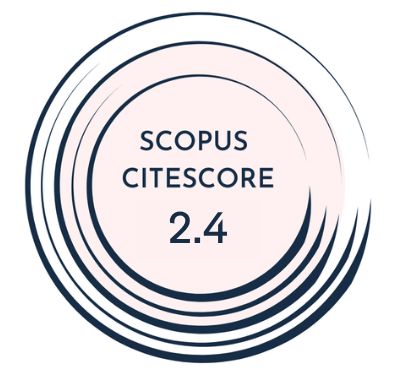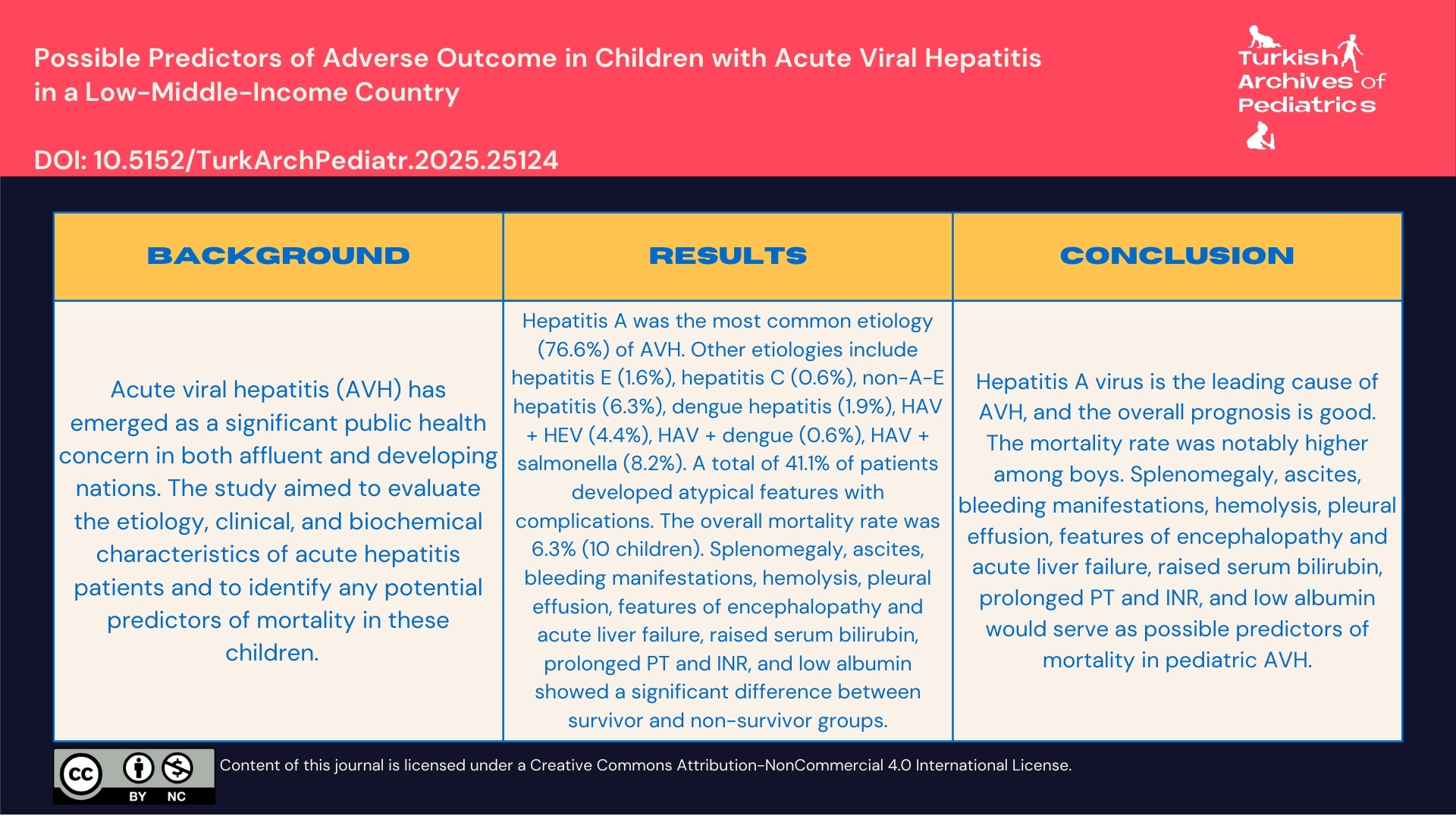Objective: This study aimed to investigate the causes, clinical presentations, and biochemical profiles of children with acute viral hepatitis (AVH) while identifying potential factors that may predict mortality in these cases.
Materials and Methods: This study was conducted in the Bangabandhu Sheikh Mujib Medical University (currently Bangladesh Medical University) setting among 158 children between July 2022 and November 2024. Children (≤ 18 years) who exhibited symptoms of AVH were enrolled in the study. A comprehensive history, physical examination, and relevant investigations were documented. Patients were monitored until complete recovery, and the outcome was recorded. The data were analyzed using SPSS version 25 (IBM SPSS Corp.; Armonk, NY, USA).
Results: Hepatitis A was the most common etiology (76.6%) of AVH. Other etiologies include hepatitis E (1.6%), hepatitis C (0.6%), non-A-E hepatitis (6.3%), dengue hepatitis (1.9%), hepatitis A virus (HAV) + hepatitis E virus (4.4%), HAV + dengue (0.6%), and HAV + Salmonella (8.2%). A total of 41.1% of patients developed atypical features with complications. The overall mortality rate was 6.3% (10 children). Splenomegaly, ascites, bleeding manifestations, hemolysis, pleural effusion, features of encephalopathy and acute liver failure, raised serum bilirubin, prolonged PT (prothrombin time) and INR (international normalization ratio), and low albumin showed a significant difference between survivor and non-survivor groups.
Conclusion: Hepatitis A virus is the leading cause of AVH, and the overall prognosis is good. The mortality rate was notably higher among boys. Splenomegaly, ascites, bleeding manifestations, hemolysis, pleural effusion, features of encephalopathy and acute liver failure, raised serum bilirubin, prolonged PT and INR, and low albumin would serve as possible predictors of mortality in pediatric AVH.
Cite this article as: Alam R, Fathema K, Nahid KL, Sarkar N, Rukunuzzaman M. Possible predictors of adverse outcomes in children with acute viral hepatitis in a low-middle-income country. Turk Arch Pediatr. Published online October 14, 2025. doi:10.5152/TurkArchPediatr.2025.25124.


.jpg)
.png)


